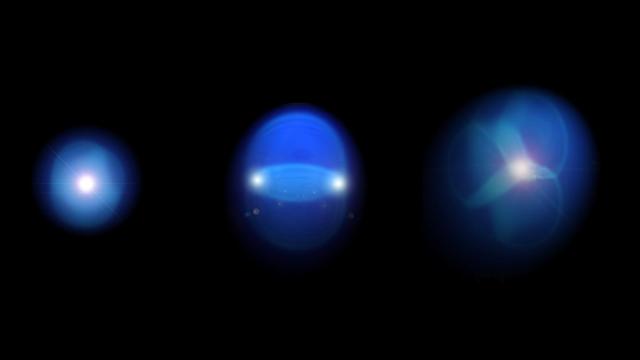The universe began with a bang—and things immediately got weird.
Stars and galaxies didn’t form right away. Scientists think that matter was initially a near-perfect fluid of quarks, the smallest known component of atoms. They have found evidence of these fluids in high-energy particle collider experiments. Now, evidence continues to mount that these liquids can form in unexpected ways, yielding tiny droplets that flow outwards explosively, like liquid Big Bangs in miniature.
Atoms are made up of electrons, protons, and neutrons, with the latter two further made up of quarks, which are glued together by particles called gluons. Quarks are impossible to separate, and if you put enough energy into trying to pull them apart, more quarks will materialise in the intervening space, possibly resulting in a “jet” of new particles.
At temperatures of around 2 trillion degrees Celsius (referring to the scientific definition of temperature, meaning the average kinetic energy of the particles — the particle detectors themselves do not get that hot), the system could become a liquid with quarks, rather an atoms, acting as its component parts. This liquid is called the “quark-gluon plasma,” or sometimes “quark soup.”
Scientists at the Large Hadron Collider in Geneva, Switzerland and the Relativistic Heavy Ion Collider (RHIC) at Brookhaven National Laboratory have been producing this liquid for a decade by colliding atomic nuclei. But more surprisingly, evidence is beginning to mount that they can create this quark-gluon plasma with smaller systems, even just protons, something previously thought impossible.
A new study from scientists at RHIC’s PHENIX experiment is the next step in understanding this strange fluid and how it forms.
“As recently as five years ago, it would have been heretical to think one can have many-body, collective dynamics in these vanishingly small (femtometer scale or smaller) systems,” Dennis Perepelitsa, assistant professor at the University of Colorado, Boulder and member of the PHENIX collaboration told Gizmodo. This paper “thoroughly establishes” that something important is happening—the potential creation of tiny droplets of quark-gluon plasma.
Researchers at RHIC’s PHENIX experiment have now announced the result of modelling and analysis of data taken at the collider since 2014. Beams of colliding protons created spherical droplets of quark-gluon plasma that expand in a circular shape. Deuterons (a proton and a neutron together) colliding with gold nuclei created expanding ellipses, and helium-3 nuclei (two protons and a neutron) colliding with gold nuclei created expanding triangles. They published their results in the journal Nature Physics.
This is exciting stuff. It’s further evidence that scientists can create this weird liquid, theorised to exist in the universe’s first blink, in unexpected ways. But the so-called “collective flow” that this experiment reports—the quarks behaving and flowing as a unit—is just one signature of the liquid.
Scientists spotted another of these signatures, an enhancement in the number of a certain kind of quark called the strange quark, last year at the Large Hadron Collider’s ALICE experiment.
But there’s a third signature still missing, explained Perepelitsa: “jet quenching,” a suppression of the particle jets produced from quarks and gluons in high-energy collisions normally seen in the detector during these kinds of experiments.
“We haven’t definitively seen this phenomenon in the small systems, although there are some interesting hints in p+Pb (proton on lead) data,” he said. “Still, the lack of a clear observation in small systems has suggested that maybe we need to rethink what the data is telling us about the large systems.”
That means the next step in the story is to understand all of these pieces together. How does the quark soup created by colliding protons translate into the quark soup created by colliding atomic nuclei? What does that tell physicists about the nature of this mind-boggling phase of matter?
These are questions for new accelerators and detectors. The LHC will be offline for two years as it gets a variety of renovations, PHENIX at RHIC will receive an upgrade to become sPHENIX, and perhaps newer experiments will further open scientists’ eyes to the nature of our universe in its earliest moments.
